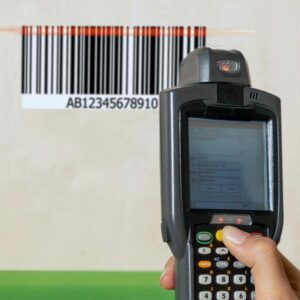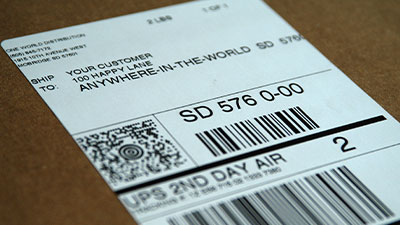Picture this: a customer excitedly clicks “Buy Now” on your website, expecting a seamless shopping experience from checkout to doorstep. But behind the scenes, the real magic—or the real chaos—begins. If your fulfillment process is slow, disorganized, or costly, that moment of excitement can quickly turn into frustration, bad reviews, and lost revenue.
That’s why the most successful ecommerce brands don’t just focus on great products and marketing—they master fulfillment. This is where third-party logistics (3PL) providers and fulfillment centers become game-changers. They don’t just move boxes; they are the powerhouse that keeps your business running smoothly. From receiving and storing inventory to picking, packing, and shipping orders with precision, 3PLs ensure that every personalized customer experience is backed by flawless logistics.
Without an efficient fulfillment strategy, even the best ecommerce personalization efforts can crumble. But with the right 3PL partner, you can scale faster, reduce costs, and deliver the seamless experience your customers expect.
So, what exactly does a fulfillment center do, and how can a 3PL help you grow? Let’s dive in.
What You Will Learn:
- The step-by-step process followed by fulfillment centers.
- How 3PL providers offer comprehensive logistics solutions, including warehousing, order processing, and shipping services.
- The important factors to consider when choosing a reliable fulfillment partner for your ecommerce business.
Understanding Fulfillment Centers and 3PL Providers
A fulfillment center is a vital part of the ecommerce world where orders are handled and sent out to customers. Its main job is to take care of the complex logistics involved in fulfilling orders, making sure that products move smoothly from storage to delivery. These centers are responsible for efficiently receiving, storing, and shipping products.
Differentiating Facilities in the Supply Chain
It’s important to know the differences between various logistics facilities:
- Fulfillment Centers: These are focused on short-term storage and quick order dispatch. They play a crucial role in ecommerce operations, prioritizing fast turnover.
- Warehouses: Designed for long-term storage, these facilities hold large amounts of inventory without the immediate need for processing orders.
- Distribution Centers: These act as middlemen in supply chains, helping with bulk distribution to retailers or fulfillment centers instead of directly handling customer orders.
Third-Party Logistics (3PL) Providers
Third-party logistics (3PL) providers are specialized companies that offer complete logistics solutions designed for online businesses. Their services go beyond just basic warehousing:
- Warehousing Services: 3PLs provide flexible storage options that can accommodate different inventory levels.
- Order Processing: They efficiently manage the picking, packing, and preparation of orders for shipment.
- Shipping Services: 3PLs coordinate with carriers to ensure timely delivery, often using multiple shipping options to save costs.
By outsourcing these important tasks to 3PL providers, ecommerce companies can focus on their main business activities while benefiting from the expertise and resources that 3PLs offer. This partnership not only makes operations smoother but also improves customer satisfaction by ensuring prompt and accurate deliveries.
The Step-by-Step Process of Order Fulfillment
1. Receiving Inventory
Efficient inventory management begins with the receiving process. The moment products arrive at a fulfillment center, they undergo a streamlined procedure to ensure accuracy and organization. This initial step is critical in the fulfillment process flow as it sets the stage for all subsequent operations.
Unloading and Verification
As shipments reach the facility, they are unloaded and cross-referenced with purchase orders. Each item is meticulously checked for discrepancies such as quantity variances or damage.
Inspection and Quality Control
Before entering inventory, items undergo quality checks. This ensures that only goods meeting predefined standards move forward in the process.
Recording and Documentation
Products are then entered into the inventory management system (IMS). Here, advanced software solutions track every detail, from SKU numbers to expiration dates, providing real-time data accessibility.
Labeling and Barcoding
To streamline future operations like order processing, items receive unique barcodes or labels. This facilitates quick identification and retrieval within the warehouse management system (WMS).
 Incorporating technology like Radio Frequency Identification (RFID) or Warehouse Management Systems (WMS), fulfillment centers enhance efficiency by automating data entry, reducing picking and packing errors, and improving order picking accuracy. A robust IMS not only organizes inventory but also plays a pivotal role in demand forecasting and stock replenishment.
Incorporating technology like Radio Frequency Identification (RFID) or Warehouse Management Systems (WMS), fulfillment centers enhance efficiency by automating data entry, reducing picking and packing errors, and improving order picking accuracy. A robust IMS not only organizes inventory but also plays a pivotal role in demand forecasting and stock replenishment.
The receiving inventory stage is more than just unloading boxes; it’s about integrating products into a seamless logistical framework that supports efficient order processing. Through these meticulous steps, fulfillment centers ensure that the right products are available at the right time, forming the backbone of a successful supply chain operation.
2. Storage & Inventory Management
Efficient storage and inventory management are essential for smooth order processing and fulfillment. The Warehouse Management System (WMS) plays a crucial role in these operations by accurately tracking inventory and making the best use of storage space.
Storage Practices
Fulfillment centers use strategic methods to store products to maximize both space and accessibility. Products are organized and stored based on their size, how often they are in demand, and how quickly they sell. This approach saves time when retrieving items during order processing and reduces mistakes in picking.
Inventory Tracking
Strong inventory tracking systems are vital for maintaining up-to-date information on stock levels. A WMS provides immediate updates whenever products go through different stages, such as receiving inventory or dispatching final orders. This system allows you to keep an eye on product availability, which helps avoid situations where you run out of stock or have too much inventory.
Operational Efficiency
An organized storage layout and advanced inventory management techniques lead to lower operational costs and faster service delivery. These improvements significantly contribute to customer satisfaction by ensuring orders are fulfilled on time.
Understanding these key storage and inventory management aspects within fulfillment centers shows how important they are for seamless ecommerce operations. This understanding sets the stage for effective subsequent stages in the fulfillment process.
3. Order Processing
The order processing stage is crucial in the fulfillment process flow, making sure that customer demands are turned into shipments. When an order is placed, it sets off a series of precise actions:
- Order Retrieval: Orders are received and logged into the fulfillment center’s system, triggering the preparation process.
- Picking Items: Using detailed order information, items are meticulously picked from storage locations. This step relies on efficient inventory systems to ensure accuracy and speed.
- Quality Check: Each item undergoes a quality inspection to confirm it meets customer expectations and specifications.
- Packing for Shipment: After picking, items are securely packed to withstand transit conditions, aligning with specific packaging requirements.
This efficient method of order processing at fulfillment centers or through 3PL partners ensures that products move quickly from storage to shipment, reducing mistakes and improving customer satisfaction.
The Packing Process: Ensuring Safe Delivery
The packing process is crucial in making sure products get to customers without any damage. This step involves more than just putting things in boxes; it requires using secure packing techniques that shield against harm during shipping.
Key Packing Strategies Used by Fulfillment Centers and 3PL Providers
Fulfillment centers and 3PLs implement strategic packing methods to optimize efficiency, control costs, and enhance the customer experience. Here are some of the key techniques they use:
1. Kitting Services
Kitting involves assembling multiple items into a single package before shipping. This is ideal for subscription boxes, promotional bundles, or products with multiple components, ensuring a seamless unboxing experience while reducing packaging waste.
2. Batch Picking for Efficiency
To streamline operations, fulfillment centers use batch picking—gathering multiple orders simultaneously instead of picking them one at a time. This method speeds up packing, reduces labor costs, and ensures faster order fulfillment.
3. Material Selection
Choosing the right materials protects products during transit while balancing cost-effectiveness. Fulfillment centers use a variety of supplies, such as bubble wrap, foam inserts, air pillows, and kraft paper to prevent damage.
4. Optimized Package Sizing
Properly sized packaging minimizes empty space, reducing shipping costs and preventing items from shifting during transit. Custom-fit boxes and poly mailers help fulfillment centers optimize packaging efficiency and reduce shipping costs.
5. Labeling and Documentation
Accurate labeling is essential for smooth tracking through logistics networks. Each package includes shipping labels, packing slips, return instructions, and any necessary compliance documentation to enhance the customer experience.
6. Enhancing the Unboxing Experience
A well-designed unboxing experience can strengthen brand loyalty. 3PLs help brands incorporate custom packaging, branded inserts, eco-friendly materials, and personalized touches to elevate customer satisfaction and encourage social sharing.
By utilizing these strategic packing methods, fulfillment centers and 3PLs ensure that products arrive safely, and cost-effectively, while still delivering a stellar fulfillment experience for shoppers.
Shipping Logistics: From Fulfillment Centers to Customers' Doorsteps
Choosing the right carrier is a key part of the logistics process. Fulfillment centers work closely with major shipping companies like USPS, FedEx, and UPS to offer multiple shipping options that meet both speed and cost requirements.
How Fulfillment Centers Choose Carriers
Fulfillment centers use advanced technology and systems to figure out the best carrier for each shipment. They carefully consider factors such as:
- The destination of the package
- The weight of the package
- The timeline for delivery
This strategic approach allows online businesses to provide their customers with various shipping speeds and pricing options.
Coordinating Deliveries at Fulfillment Centers
Within these centers, delivery arrangements are smoothly organized. The process includes:
- Order consolidation: Combining multiple orders into one shipment whenever possible to save on costs.
- Label generation: Creating accurate shipping labels with tracking codes for complete visibility.
- Dispatch scheduling: Planning pickups with carriers at the most efficient times.
Timely order dispatch is crucial. Fulfillment centers have strict schedules and often process orders within hours of receiving them. This quick turnaround is made possible by advanced Warehouse Management Systems (WMS) that keep track of inventory levels and order statuses in real-time. By creating a systemized approach, brands can begin to improve fulfillment speeds and offer services like overnight shipping.
The Importance of Shipping Logistics
Shipping logistics involve more than just transporting packages from one place to another; they also focus on ensuring reliability and customer satisfaction. As these centers handle large numbers of shipments every day, their ability to maintain high accuracy rates directly impacts the reputation of the online brands they work with.
Streamlining Returns Management with Fulfillment Centers
Efficient returns processing in fulfillment centers is critical for maintaining seamless operations and customer satisfaction. A well-structured returns management process can efficiently handle product returns, ensuring minimal disruption to your supply chain while keeping customers content.
Fulfillment centers implement robust systems to manage returns effectively:
- Automated Return Authorization (RMA): This system allows quick generation of return labels and tracking numbers, simplifying the process for both you and your customers.
- Real-Time Inventory Updates: As returned products are processed, inventory levels are automatically adjusted, ensuring accurate stock availability without manual intervention.
- Quality Inspection: Returned items undergo thorough inspections to assess their condition. This ensures only sellable products re-enter the inventory, maintaining quality standards.
- Flexible Restocking Options: Fulfillment centers offer flexible restocking solutions tailored to specific business needs, whether that involves repackaging, refurbishing, or disposal of non-sellable goods.
These processes not only enhance operational efficiency but also maximize customer satisfaction. A hassle-free return experience can significantly boost brand loyalty and encourage repeat purchases. As you consider a fulfillment partner, understanding their ability to handle returns efficiently becomes critical for your ecommerce success.
Additional Services Offered by Fulfillment Partners
Fulfillment centers and 3PL providers offer a range of value-added services that go beyond basic logistics. These services are designed to enhance the customer experience and streamline operations for online businesses.
1. Kitting and Assembly
Tailoring products to specific customer needs, kitting involves bundling various items into a single package. This service is ideal for promotional bundles or subscription boxes.
2. Customized Packaging
Elevate your brand with unique packaging solutions. Customized packaging can include branded boxes, inserts, or even personalized messages, enhancing the unboxing experience for customers.
3. Personalization Services
One World Direct is the only 3PL offering product personalization through our personalized-to-consumer (P2C) fulfillment services. Our free plugin integrates directly with your ecommerce platform to allow shoppers to customize products with engravings, embroidery, and or direct-to-object printing.
4. Returns Management
Efficient handling of returns not only improves customer satisfaction but also streamlines restocking processes.
5. Inventory Management Tools
Advanced software solutions, including Warehouse Management Systems (WMS), provide real-time inventory tracking and reporting capabilities.
These value-added services underscore the role of fulfillment centers and 3PLs in providing comprehensive logistics solutions tailored to meet the diverse needs of ecommerce businesses.
Benefits of Partnering with Fulfillment Centers/3PLs for Ecommerce Success
Working with fulfillment centers and third-party logistics (3PL) providers can greatly improve the efficiency of your online business operations. These specialized companies offer various benefits that simplify logistics and contribute to ecommerce success.
1. Scalability
Fulfillment centers offer the flexibility to quickly scale operations in response to changing demand. Whether you’re dealing with seasonal spikes or long-term growth, 3PLs can adjust resources as needed, ensuring smooth service delivery without the burden of fixed costs.
2. Cost Efficiency
Outsourcing logistics functions to fulfillment centers eliminates the need for substantial investments in warehousing, technology, and labor. This allows businesses to allocate financial resources towards core areas such as product development and marketing.
3. Expertise and Technology
Take advantage of the advanced technology and industry knowledge provided by 3PLs. Cutting-edge Warehouse Management Systems (WMS), Order Management Systems (OMS), and integrated tracking solutions improve inventory accuracy, minimize errors, and streamline order processing.
4. Improved Customer Satisfaction
With their strong infrastructure, fulfillment centers guarantee prompt deliveries and effective returns management. This directly leads to higher customer satisfaction levels and fosters brand loyalty. OWD is one of the few 3PLs that takes ecommerce customer service to the next level with our call center. Our American agents handle customer queries through chat, email, and phone.
5. Global Reach
3PL providers enable businesses to enter international markets by handling complex logistics tasks like customs clearance and international shipping regulations. This empowers brands to expand their global presence effortlessly.
Incorporating fulfillment centers or 3PL providers into your logistics strategy isn’t just about outsourcing—it’s about enhancing your operational capabilities, focusing on growth, and providing an exceptional customer experience. This strategic partnership is essential for achieving ecommerce success in today’s competitive marketplace.
Book a Complimentary Logistics Consultation:
If you want to lower logistics expenses, improve shipping speeds, and turn logistics from a cost to a profit center with P2C fulfillment, schedule a call with our team.
FAQs (Frequently Asked Questions)
What is a fulfillment center and what role does it play in ecommerce?
A fulfillment center is a specialized facility that manages the storage, processing, and shipping of products for ecommerce businesses. Its primary role is to ensure efficient order fulfillment by receiving inventory, storing products, processing customer orders, and handling shipping logistics.
How do fulfillment centers differ from warehouses and distribution centers?
Fulfillment centers focus specifically on the order fulfillment process for ecommerce, whereas warehouses are primarily used for storage of goods without necessarily preparing them for shipment. Distribution centers serve as hubs for distributing products to retailers or customers but may not handle individual orders as efficiently as fulfillment centers.
What services do third-party logistics (3PL) providers offer to online businesses?
3PL providers offer comprehensive logistics solutions that include warehousing, inventory management, order processing, packing, shipping logistics, and returns management. They help ecommerce businesses streamline their operations and improve overall efficiency.
What is the step-by-step process of order fulfillment in a fulfillment center?
The order fulfillment process typically involves several key stages: 1) Receiving inventory into the facility; 2) Storing and managing inventory; 3) Processing customer orders by picking items; 4) Packing orders securely; and 5) Shipping products to customers.
How do fulfillment centers manage shipping logistics?
Fulfillment centers manage shipping logistics by selecting appropriate carriers, coordinating delivery arrangements, and ensuring timely dispatch of orders. They utilize technology to track shipments and provide updates to customers regarding their order status.
What are the benefits of partnering with a fulfillment center or 3PL provider for my ecommerce business?
Partnering with a fulfillment center or 3PL provider allows ecommerce businesses to focus on core activities such as marketing and product development while outsourcing complex logistics functions. Benefits include reduced operational costs, improved efficiency, enhanced customer satisfaction through faster shipping times, and access to specialized expertise in logistics management.




